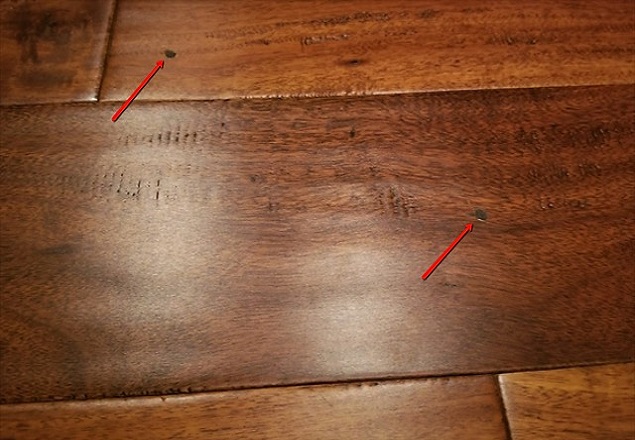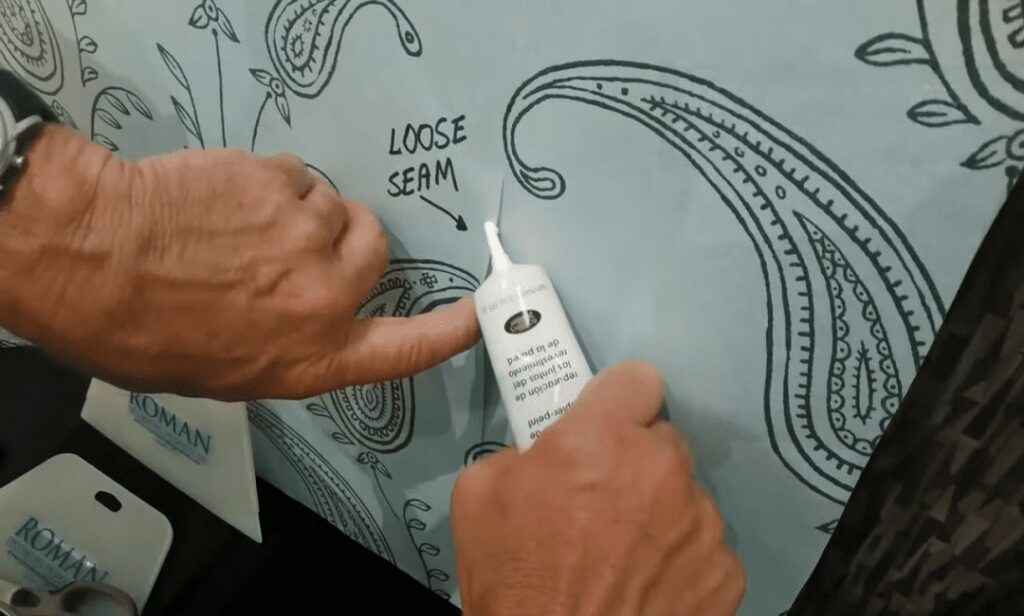It’s true that there are some house repairs that should be left to the experts, but these problems can be handled by the average homeowner. Remove these maintenance tasks from your to-do list because they are simple and only take a few minutes of your time.
Keeping your home in tip-top shape doesn’t have to eat up all of your spare time; some repairs and maintenance may be done quickly and without the assistance (and cost) of a professional.
The following quick fixes won’t take more than a few minutes of your time, so you may do them without interrupting your day. Stop procrastinating and get your house in order!
Sticking Vinyl Window
Vinyl windows can keep the cold out, are long-lasting, and don’t break the bank. One issue with vinyl windows is that dirt and grime can accumulate in the window tracks over time, making it harder to open and close the windows.
Use a dry silicone spray, such 3M Silicone Spray, to get rid of the grime and lubricate the window tracks. Use a pointed spray bottle to clean the space between the window and the jamb, next open the window and wipe the inside of the track.

Wobbly Shower Head Woes
A loose pipe in the wall might cause a shaky shower head, but it’s easy to fix. You’ll need a screwdriver to pry the shower head trim ring away from the wall and expose the pipe’s base and the hole below.
Using the straw that comes with the can, spray a little bit of expanding foam like GREAT STUFF Foam Sealant into the hole, not into the pipe.
The foam expands and hardens around the outside of the pipe, preventing it from moving. Remove the trim ring, tighten the shower head, and then relax and enjoy the new, more forceful spray.

Squeaky Wood Floors
Squeaking sounds can be produced when wood is rubbed against wood. There are bound to be a few spots on your hardwood floors that always make a squeaky noise when you walk on them.
With a little cornstarch, you can quiet a noisy wood floor. The solution is as simple as sprinkling it over the noisy spot and brushing it into the spaces between the boards.
In order to stop the creaking, cornstarch can be used as a dry lubricant between the wooden surfaces.

Ugly Ceiling Stains
A stained ceiling from a leaking roof or dripping pipe may make the entire space look rundown and unclean. You don’t have to repaint the entire ceiling to get rid of that stain; there is a terrific method that will significantly lessen its visibility.
First, you should fix the leak, and then you can fill a spray bottle with a solution of one part household bleach to five parts water and use it to disinfect the area.
Spray the solution onto the stain until it disappears. The stain will lighten significantly, if not disappear, after a few hours.

Reduced Faucet Flow
Faucets can become clogged with hard water deposits and other small debris, preventing water from flowing freely. Good news, you can avoid replacing the faucet by simply cleaning it.
A little aerator screen is located on the end of the faucet and can collect particles. When the screen is clogged, water either trickles through more slowly or sprays to one side.
If you tilt the screen of the aerator to the left, it comes out of the unit. Soak the screen in white vinegar overnight to dissolve hard water deposits, then reattach it.

Loose Wallpaper Seams
Incorrectly glued wallpaper has a propensity to peel at the seams, making the entire wall look shabby; however, this is an easy problem to solve that will only take a minute.
Spray the area with hot water to soften the loose paper, and then squeeze a small amount of seam glue, such as Red Devil Wallpaper Repair Adhesive, beneath the loose piece.
The paper should be pressed back into place and any excess should be wiped away with a moist cloth.

Squeaky Doors
The opening and closing of a door that makes a creaking and moaning sound doesn’t inflict any damage, but it can be very bothersome.
Spraying lubricating spray, such as WD-40, on the squeaky part should stop the noise. Using the straw provided, spray the top crease of the hinge. The lubricant should be used sparingly, as just a small amount is needed.
Protect the door or jamb from overspray by holding a rag or paper towel behind the hinge as you spray.

Banging Cabinet Doors
Installing bumpers, such as GorillaGrit Cabinet Door Bumpers, is a quick and easy solution to the annoying banging sound made by closing cabinet doors.
Remove any dirt or grime from the cabinet door, and place two bumpers on the inner edge, one about half an inch from the bottom and the other from the top.
To muffle the sound of the cabinets closing, place the peel-and-stick bumpers where the door meets the cabinet base.

Unsightly Stains
Bathtubs, showers, and sinks are especially vulnerable to the damage hard water may cause, since it can leave behind unsightly orange-brown stains that are difficult to remove even with the application of harsh chemicals.
Here’s a faster solution if you’d rather not use acidic cleaning chemicals or spend hours scrubbing the stains away.
Mix lemon juice and cream of tartar, which you can find in the spice section of your grocery store, to make a paste. Then, put the paste directly on the stains. Just let the mixture sit for an hour on the stain, and then rinse it off to reveal a spotless light fixture.

Drafty Doors
The cost of heating a home can be significantly raised if an exterior door does not seal firmly when closed.
Pulling and scraping off the old weatherstripping and replacing it with new peel-and-stick weatherstripping is all it takes to remedy drafts.
To ensure a tight seal, invest in a weatherstripping kit like the WeatherGuard Door Insulating Kit, which includes a bottom door seal in addition to the standard weatherstripping.

Sticking Door Lock
Do you have to jiggle, coax, or forcibly turn the key to open your door? Corrosion and filth buildup can make using a key in a door lock difficult—but if you’re having trouble, don’t rush out to replace a tricky lock.
Use the lead of a graphite pencil to rub the key’s cuts, or squirt some powdered graphite (like Panef L-300 Powered Graphite) into the lock’s keyhole.
Graphite acts as a lubricant for the lock’s tumblers, allowing you to turn the key with ease.

Sticky Wooden Drawers
You don’t have to put up with the aggravation of sticking drawers because of the natural aging process of wood furniture. Take it out of the cabinet and flip it over so you can clean the bottom of the drawer and get it sliding freely again.
Run a bar of paraffin (you can find it in the canning aisle of your grocery store) along the drawer’s underside. The paraffin will act as a lubricant, making the drawer easier to open and close.

Moldy Washer
It’s likely that you have some mildew in your washing machine if your garments retain a musty odor after being washed.
Fortunately, getting rid of the mildew is a simple and fast task. Run a cycle with one cup of baking soda and the hottest water setting possible.
Cleaning the laundry with baking soda will eradicate any mildew growth, restoring its original fragrance.

Dirty Filter
Clean air is maintained throughout the home because the HVAC filter captures dust, debris, and allergies.
When it isn’t cleaned or changed, the furnace has to work harder to do its job, reducing the furnace’s lifespan and raising energy expenditures. Worse, it means you and your family are inhaling in polluted air.
In order to maintain good air quality and efficient energy use, you should replace the filter every 2 to 3 months (more often if you have pets).

Outdated Bulbs
Unless a light bulb burns out and needs to be replaced, you probably don’t give much thought to the lighting in your home. If, however, you are still using incandescent bulbs, you may want to rethink this.
LED bulbs should be used instead of incandescent, fluorescent, or halogen lamps. These newer models are more durable and consume less electricity.
Furthermore, some models contain convenient features that can connect to your phone or home device, such as the GE LED+ bluetooth speaker light bulb, which features a bulb with a built-in speaker.

Tile Gaps
Your home will show signs of aging and settling over time, such as spaces appearing between the tiles in your bathroom.
It not only looks bad, but it also provides a breeding ground for mold and mildew.
Thankfully, you won’t have to replace all the tiles to fix the problem. Gather some waterproof siliconized acrylic caulk and a caulking gun.

Worn Fridge Seals
Air leakage into the refrigerator from faulty magnetic seals might cause the appliance to work harder than it needs to, reducing its lifespan.
Changing the seals is a simple task that can be done in a short amount of time. Get out your screwdriver and pry off the metal strip holding the old seal (look under the lip of the seal).
Once the original seals are removed, the new ones can be installed in the same way, just backwards. If your refrigerator’s seals have become damaged, you should contact the manufacturer for instructions.

Check Detectors
One of the simplest and most crucial maintenance activities is to check the smoke and carbon monoxide detector batteries. Check that everything in the house is in working order. Don’t wait to replace dead batteries in your alarms; you never know when you’ll need them to go off.

Install Downspout Extensions
Don’t let rainwater collect around your house’s foundation if you have a gutter system or a roof leak. Soil expansion and pressure can produce cracks in the foundation, while water left around the house’s base can cause leaks in the basement. Add extra length to the downspouts so that water may flow away from the house and away from potential disaster. They’re low-cost and easy to set up.


